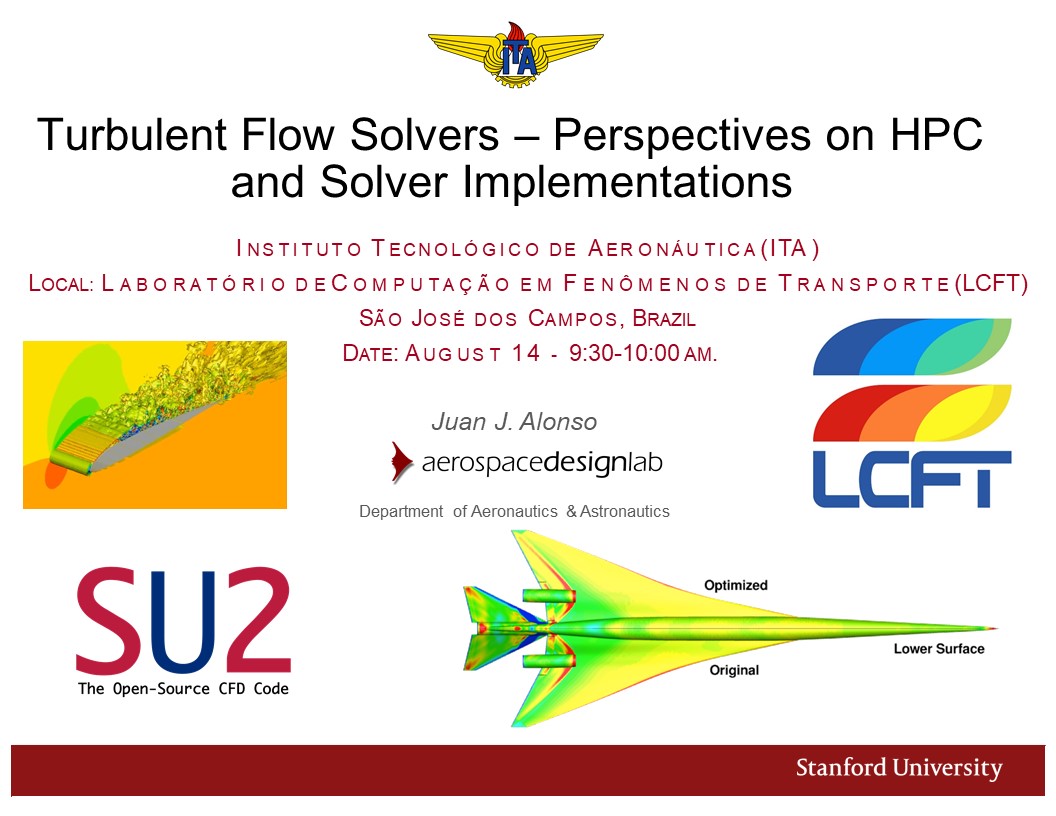Abstract: The advent of ever-more-powerful computing
architectures that are faster and more heterogeneous in nature
(accelerators, many-core, GPUs) and that require explicit memory
management by the developer present significant opportunities to improve
the level of resolution of fluid flows of interest. In addition, such
awesome computing power allows us to explore complex design spaces and
pursue both aerodynamic shape optimization and even multi-disciplinary
problems. But extracting performance from new computing architectures
is not trivial and requires sustained efforts from an interdisciplinary
team of researchers that are knowledgeable in flow physics, computing
science / HPC, and applied mathematics. This talk discusses our efforts
at Stanford University and in partnership with many institutions around
the world to develop a community, open-source code and framework named
SU2 (
su2.stanford.edu)
with two flow solvers that incorporate the latest techniques in HPC,
numerical methods, and flow models. The talk discusses the challenges
of developing such a system, the improvements in performance that can be
obtained from using modern computing architectures, and highlights some
recent examples of supersonic aircraft shape optimization and the new
Discontinuous-Galerkin higher order solver that can be used for
large-eddy simulations.
 Palestra do Prof. Juan Alonso, Stanford University
Palestra do Prof. Juan Alonso, Stanford University
 Palestra do Prof. Juan Alonso, Stanford University
Palestra do Prof. Juan Alonso, Stanford University

